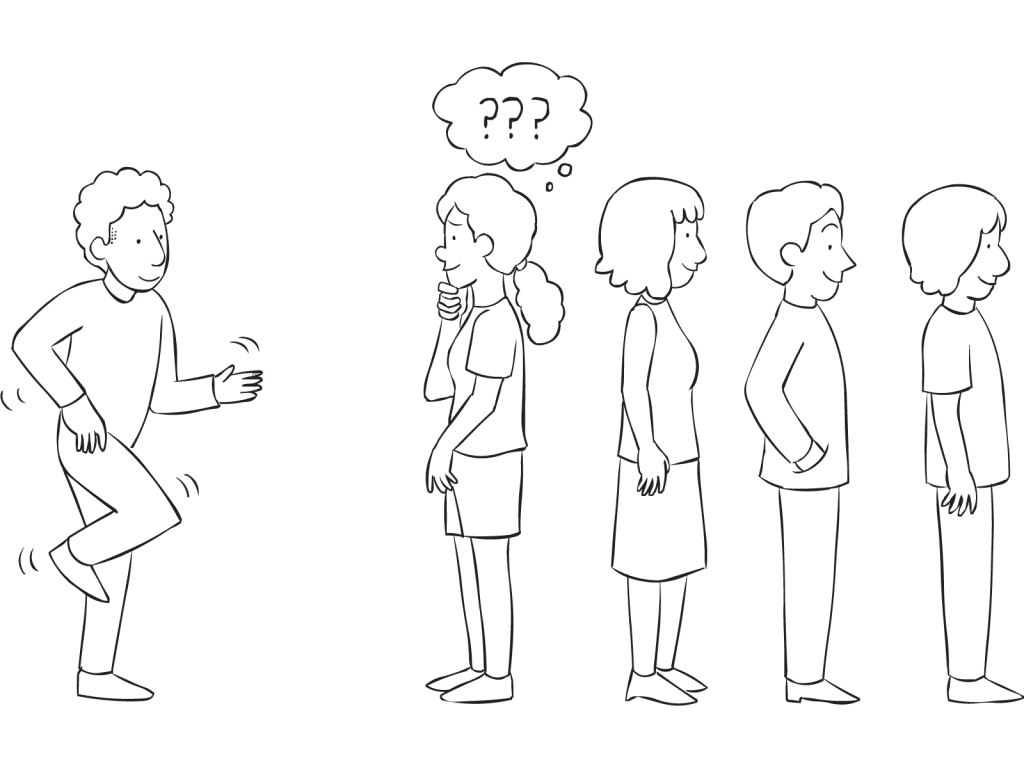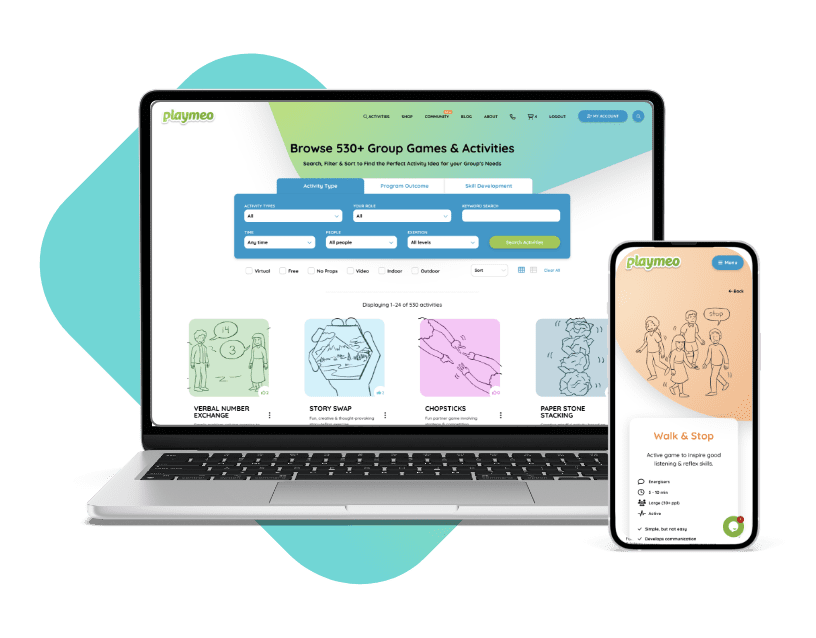Download our free 28-page ebook jam-packed with outrageously fun activity ideas.

Charade Line
Communication skills activity that creates outrageous laughter.
- Very playful & fun
- Inspires creativity
- Promotes effective communication
- Sharpens observation skills
- No props
Save to Playlist
Communication Skills Activity
This simple storytelling exercise brings powerful learning moments through entertaining mime and creativity. Charade Line demonstrates how messages can transform as they pass from person to person, creating both laughter and insight. As an engaging communication skills activity, it naturally reveals the challenges of information sharing while keeping participants fully engaged. Ideal for training workshops, classrooms, or team meetings, it makes complex communication concepts tangible and memorable.
Step-by-Step Instructions
Resources Premium
Video Tutorial Premium
How To Play Narrative Premium
Practical Leadership Tips Premium
Social-Emotional Learning Premium
Health & Wellness Programming Premium
Popular Variations Premium
You Might Also Like... Premium
Useful Framing Ideas Premium
Reflection Tips & Strategies Premium
Source Premium
Comments (5)
Leave a Reply

No Props No Problem
Brand NEW book featuring 150+ outrageously fun group games & activities. Scan QR codes to connect to tons of digital content including video tutorials.
Add to CartNew – TRY BEFORE YOU BUY
NEW – Latest Posts
Choose a plan that’s right for you
We offer a range of membership plans with no surprises.
Click an option below & discover our simple pricing.

Individual
Click here if you’re a:
- Teacher
- Corporate trainer
- Outdoor educator
- Camp leader
- Youth leader
- Conference organiser
- Therapist/counsellor
Membership Plans

Enterprise
Click here if you represent a:
- School
- Corporation
- Community-based Organisation
Explore plans for
10, 50, 200 or more
potential users
Membership Plans
Login

Wow, you’ve been busy!
You can open 1 more
activity for free.
Limit resets every 24 hours
or Sign-Up to get UNLIMITED access.





Loved this activity for teaching elementary students how to focus on nonverbal communication, such as body language and facial expressions. After a group discussion, I explained this activity to be a bit like the game, ‘Telephone’ but without speaking. I did need to shorten the role-play ideas though and added some of my own. Later, I received a lot of positive feedback from students and staff.
This is a fantastic way to connect this game to your curriculum, Jeanette. Well played.
i wonderrrrr…… what if we reversed the roles? one person guesses the story being told by multiple people at the same time? framing could be about how we get so much information from different sources, and the challenges that go with this – interpretation, comprehension, understanding, sense-making, empathy, conflicting messages, et al
variation – this could be done in two teams, both giving the message at the same time (phrase, sentence, or one word – related to the topic).
we’ve done this at the end of a workshop, with a different intention – super high energy!
(“,)
You’re a genius JeWElle, I like this idea a lot. I must remember to try this next time I pull this game out of the bag 🙂
Great activity demonstrating the subtleties and challenges regarding communication and what is required of both the “speaker” and “listener” to keep a message clear and understood.
Recently participated in this activity and it highlighted that despite the best intentions and abilities of a speaker and the receiver of a message, how quickly and easily messages can be distorted beyond recognition. The results were hilarious in that setting.